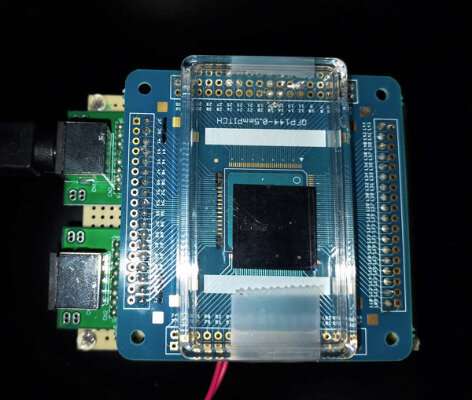This article has been reviewed according to Science X's editorial process and policies. Editors have highlighted the following attributes while ensuring the content's credibility:
fact-checked
peer-reviewed publication
trusted source
proofread
Brain-inspired computing system based on skyrmions 'reads' handwriting

A computing device that uses tiny magnetic swirls to process data has been trained to recognize handwritten numbers. Developed by RIKEN researchers, the device shows that miniature magnetic whirlpools could be useful for realizing low-energy computing systems inspired by the brain.
Our brains contain complex networks of neurons that transmit and process electrical signals. Artificial neural networks mimic this behavior, and are particularly adept at tasks such as pattern recognition.
But artificial neural networks consume a lot of power when run on conventional silicon chips. So researchers are developing alternative platforms that are specially designed for brain-inspired computing, an approach known as neuromorphic computing.
The new neuromorphic device created by researchers including Tomoyuki Yokouchi of the RIKEN Center for Emergent Matter Science, relies on a type of artificial neural network known as the reservoir computing model. One feature of this model is its short-term memory—its output depends on both past and present inputs to the system.
That's where tiny magnetic whirlpools known as skyrmions come in. These magnetic patterns have an in-built memory effect, because their structure and behavior reflect previous exposure to magnetic fields.
Skyrmions can also run on low energies. "Another advantage of using skyrmions is energy saving, because skyrmions can be controlled using very small current densities," says Yokouchi.
The team's device contains a series of bars covered in a platinum–cobalt–iridium film, which can host skyrmions a few micrometers wide.
To put data into the device, the researchers encoded information into a magnetic field that, when applied to the skyrmions, generates a voltage. This output voltage depends on the number and size of the skyrmions present.
The researchers trained the device using more than 13,000 images of handwritten digits from 0 to 9. They converted the images into magnetic input signals, and tuned the device so that the output voltage signals accurately represented the correct digit.
The team then tested the device using another 5,000 images, and found that it could recognize the numbers with about 95% accuracy—outperforming rival neuromorphic devices.
"Our work indicates that energy-saving neuromorphic computing can be realized using skyrmions," says Yokouchi.
The findings are published in the journal Science Advances.
The team hopes to develop a similar device that uses an electrical current for its input, rather than a magnetic field, which should improve its performance and further reduce its energy consumption. "If we succeed, we may be able to demonstrate more complex tasks such as speech recognition and motion tracking," Yokouchi says.
More information: Tomoyuki Yokouchi et al, Pattern recognition with neuromorphic computing using magnetic field–induced dynamics of skyrmions, Science Advances (2022). DOI: 10.1126/sciadv.abq5652



















